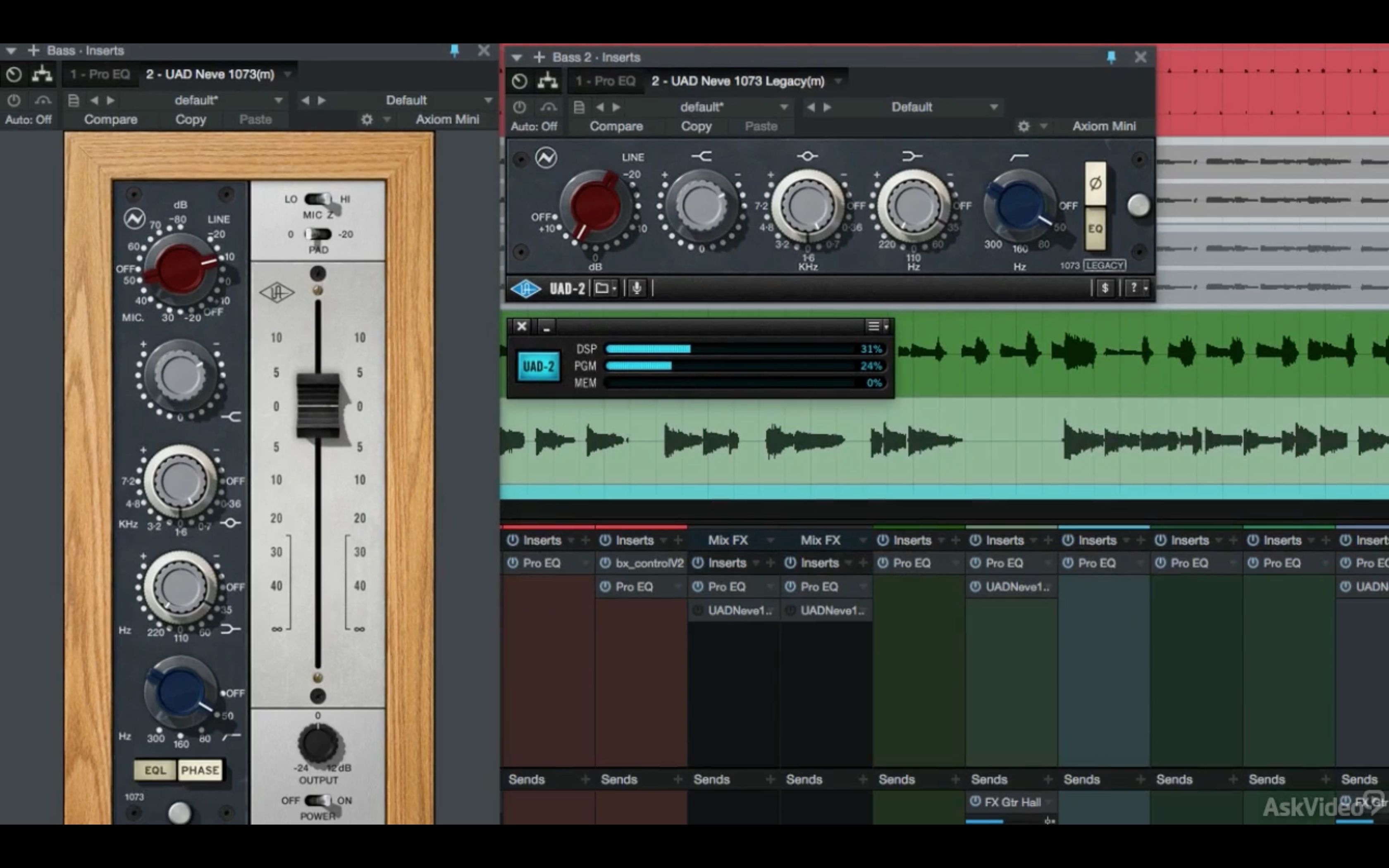

Then go down to the lower section, push the red (boost) button (waveform legend showing upward boost) and turn the gain knob up to 6dB.Ĭonversely, if you selected the black (cut) button below the white LIN button you would then be cutting 300Hz by 6dB.
NEVE 1073 PLUGIN SETTINGS PLUS
So all that’s left is “how do we select the frequencies?” and that’s done with the ingenious arrangement of red (marked “lower”) and black (marked “higher”) knobs in the top section, plus the frequency values in black in the middle row of the red and black knobs.įor example, to boost 300Hz by 6dB, first click the number 300 in the middle of the red and black knobs and watch the way one red and one black knob at frequencies either side of 300Hz are automatically pushed in by the equaliser.

Exactly the same arrangement for the “High Band Filter” is on the other side. To the left there is the gain knob for the “Low Band Filter” and to the left of that are 3 buttons to select whether the gain knob sets the amount of boost, no effect (LIN setting, as described earlier) or the amount of cut. The lower section has the boost/cut controls and the whole mid section can be bypassed with an out/in knob, below which is the main power switch and light that works as the bypass for the whole plugin.

It’s basically looking after the midrange and split into 2 sections, the (very) low mids in the left half and the higher mids in the right half. The middle section looks a lot busier, but is quite well designed and easy to use once you get it. Nicely, there is a menu at the top right corner that allows you to set the gain staging, oversampling options, GUI size and analog settings. This is one of those eq’s with the famous “air” sound and thunderous lows on tap and there is no digital harshness when really pushing it (although you may want to watch the output gain as it’s capable of some big sounds). Leaping over to the far right panel, the High section is basically a mirror image of the low section, but obviously working in the high mid to top end area, with high boost and cut and the same combination of controls. So, despite the lack of parametric knobs, there is plenty of control on tap here. These filters can interact in very interesting and pleasing ways and your ears will be the best judge of the results. To the left of the boost knob is a low cut continuous filter set at 60Hz and going down to -12dB, then below this is a further switchable low cut filter with a choice of 4 turnover frequencies. This section, as with all other sections, can be switched out by pressing the white “LIN” button, which disconnects the filters but leaves the signal path going through the tubes and transformers. On the left third is the Low section, which starts up the top with a low shelving boost section with a choice of 4 frequencies and a switch to select a 6 or 12dB range.

This is a fiendishly clever design that gives you control over a total of 8 bands. One of my favourite engineers and a true character, Sylvia Massy, uses Neve 1073’s exclusively and records some wonderful sounds.Īnyway, back to the Lindell TE-100. These vintage style plugins sound excellent for sweetening partly because of their apparent limitations, such as the time saving small range of well chosen fixed frequencies that suit musical instruments and voice, and also because of the sound of the circuits used, usually transformers, discrete transistors and, as in this case, tubes. However, when I need to do a little “musical” tonal shaping of a track I will reach for a vintage emulation such as a Neve 1073 style plugin or maybe a Pultec emulation (or another Neve, such as the Brainworx bx_console, review coming soon). I love the GUI and the ability to grab any frequency and any bandwidth and perform life saving surgery on the patient. It was Wave’s first plugin and still remains an ideal tool for me.
NEVE 1073 PLUGIN SETTINGS FREE
Although I have perfectly good and free parametric equalisers in Logic and Reaper, I prefer the flexibility and ease of use of the Q10. For zeroing in on problem frequencies like a nasty ring in a snare drum, I go straight to my Waves Q10. There’s a lot of debate about functional digital eq’s vs vintage emulations and I totally get it. It really does have the “mojo” of that big strange looking box from the 60’s (it could be straight out of the Tardis) and it is designed like no other equaliser I’ve ever encountered.
NEVE 1073 PLUGIN SETTINGS MANUAL
Hey folks, it’s been a while, but I’m back with a sensational new plugin from Lindell and the Plugin Alliance team.Īs the manual says, “This plugin faithfully reproduces the behavior and character of the K&H® UE100 tube equalizer, a 60s all tube active equalizer that weighs 25kg and contains no less than 14 tubes!”


 0 kommentar(er)
0 kommentar(er)
